I have two large pin oak trees in my back yard. They are one of the reasons I purchased the house. They are healthy – for the most part – and don’t suffer the blight of most pin oak trees in south central Kansas, Iron Chlorosis. I appreciate the shade they give my house, especially in the late afternoon. Each of them is about 50 years old. I have long been envisioning a shade garden underneath them.
Last spring, I finally got around to planting a few shade plants in a small space I had developed long ago under one of these trees. I was determined to find some plants that would grow in the shadow of this tree. Root competition is a problem as well. Honestly, I have struggled to grow anything under their shade.
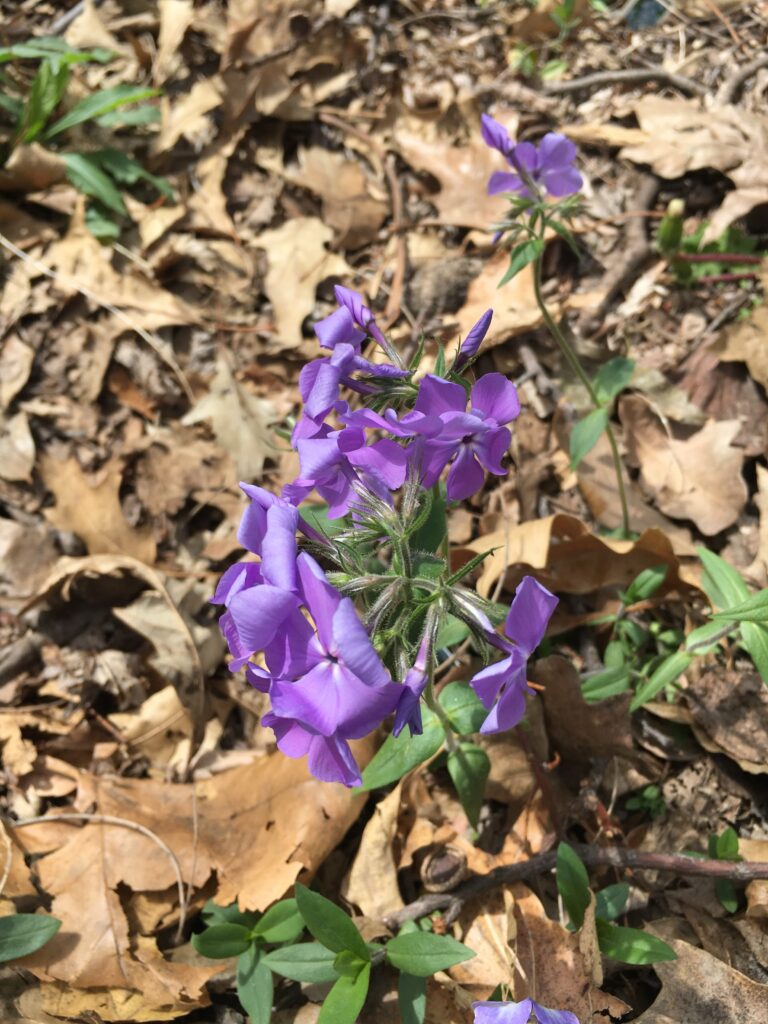
Here are a few of the plants that survived in my shade garden, with a few even already blooming this spring.
- Woodland Phlox
- Barren Strawberry
- American Columbine
- Yellow Columbine
- Bluebird Columbine
- Variegated Solomon’s Seal
- Solomon’s Seal
- Elm-leaf Goldenrod
- White Woodland Aster
- Mayapple
- Liverleaf
- Golden Ragwort
- Herman’s Pride Yellow Archangel
- Sweet Woodruff
- Rose Sedge
- Evergold Sedge
- Plantain Sedge
- Pennsylania Sedge
- June Hosta

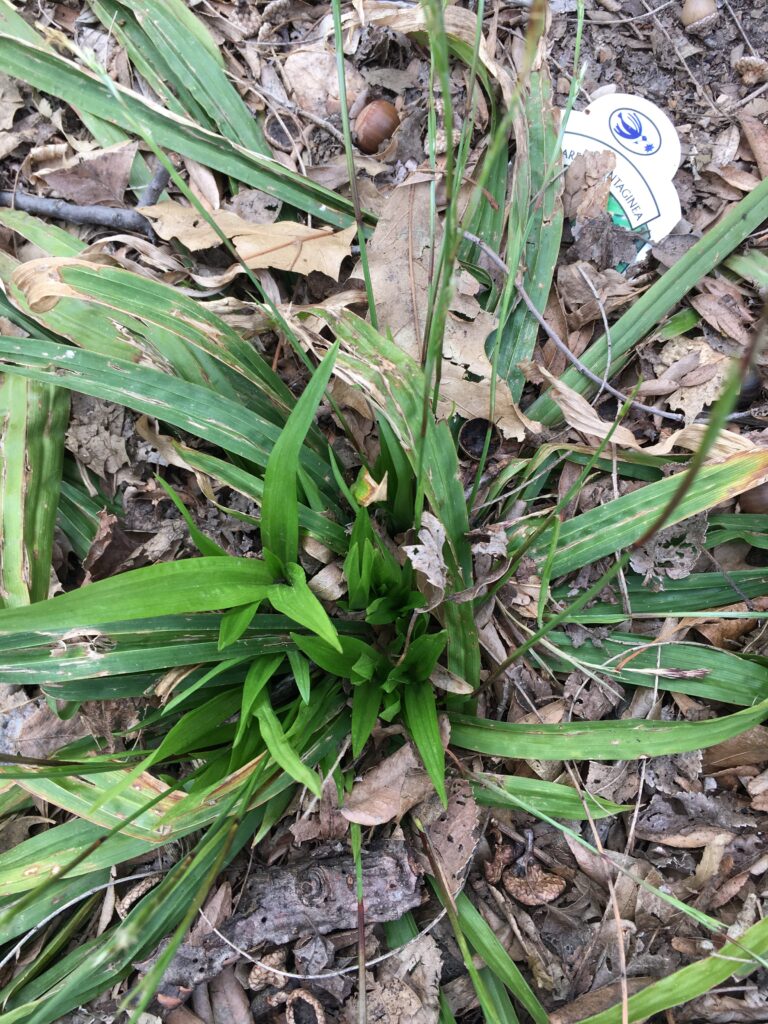
Watering
As you can see, I had quite a few plants survive these adverse conditions. One of the biggest lessons was to regularly water the area. I spent the first three weeks after planting hand watering each plant. Once I noticed that the plants were starting to put on new growth, I backed off the watering and just watered as needed. I would frequently check the top inch or two of soil for moisture. If it seemed dry, I would hand water again. I followed this regimen throughout the remainder of the growing season. Keep in mind that you are trying to grow shade plants in an area that was once predominately prairie. Supplemental moisture is required for those plants to survive.
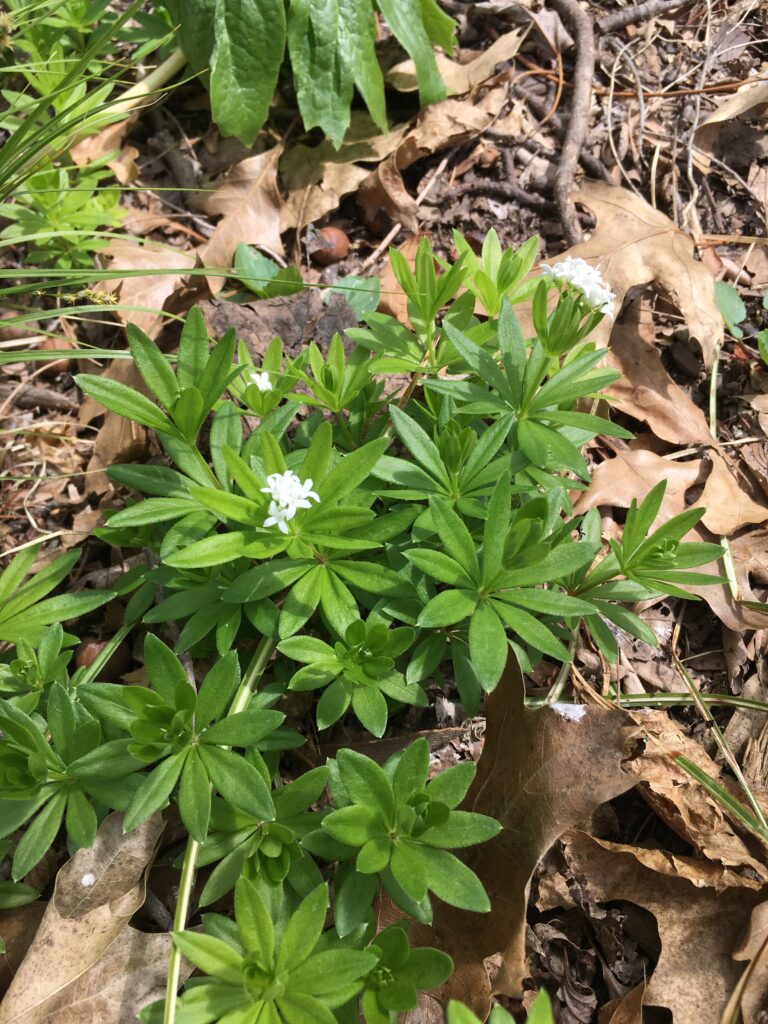
Leaves
Essentially, I left the leaves as they fell from the tree to a depth of one to three inches. These leaves are good insulation and eventually break down to release nutrients. Of course, too many leaves can be a problem too. Gently remove excess leaves that blow in from other areas.
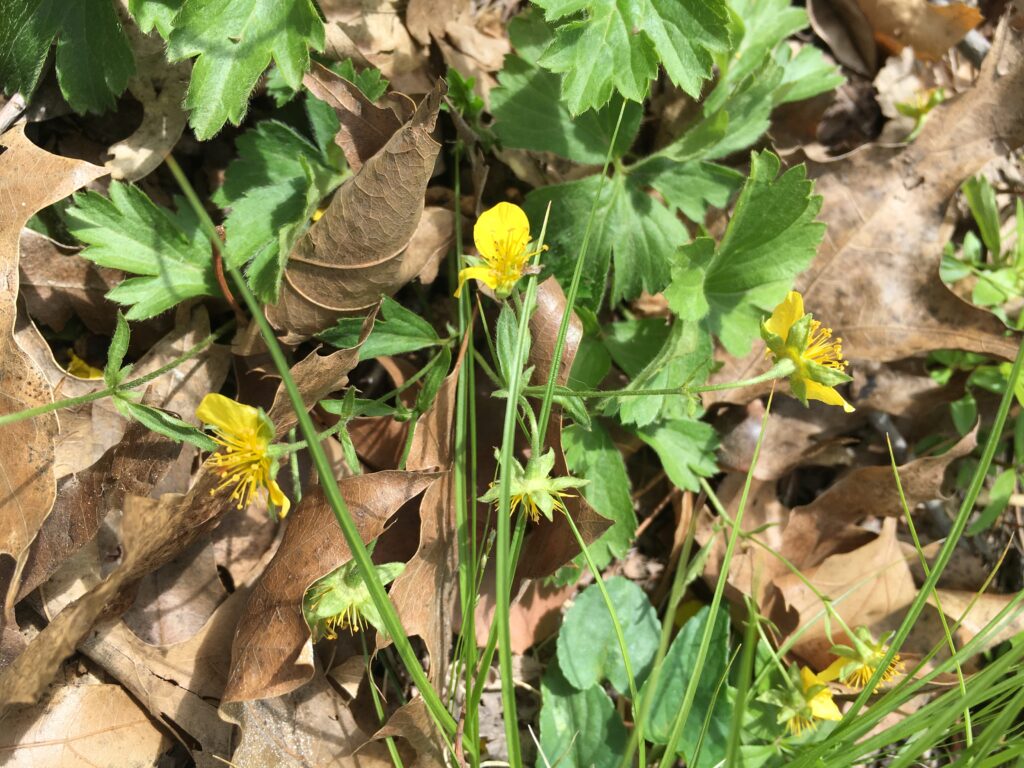
Disappearance
I had some plants disappear last summer. Some of the Solomon ’s seal faded into the soil. Remarkably they are coming back to life this spring. I kept watering them even though they went dormant. A spring ephemeral like mayapple is supposed to go dormant, so I was certain it would return. However, the solomon’s seal made me wonder about their survivability. Shade plants are resilient. They surprised me with their return this spring.
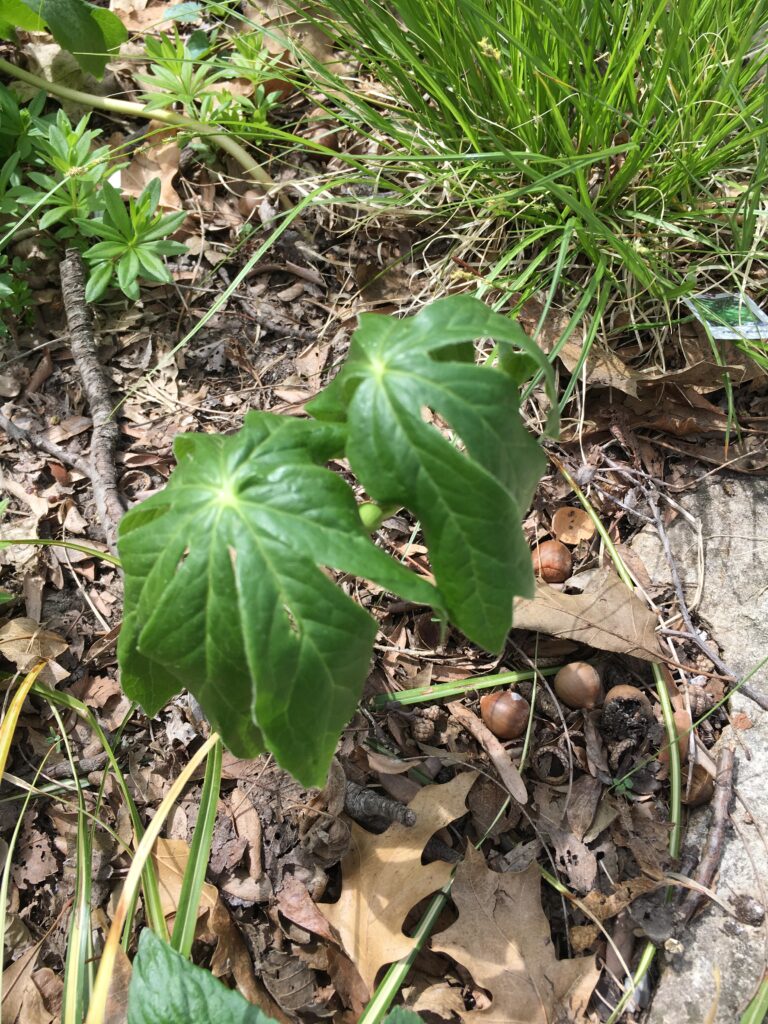
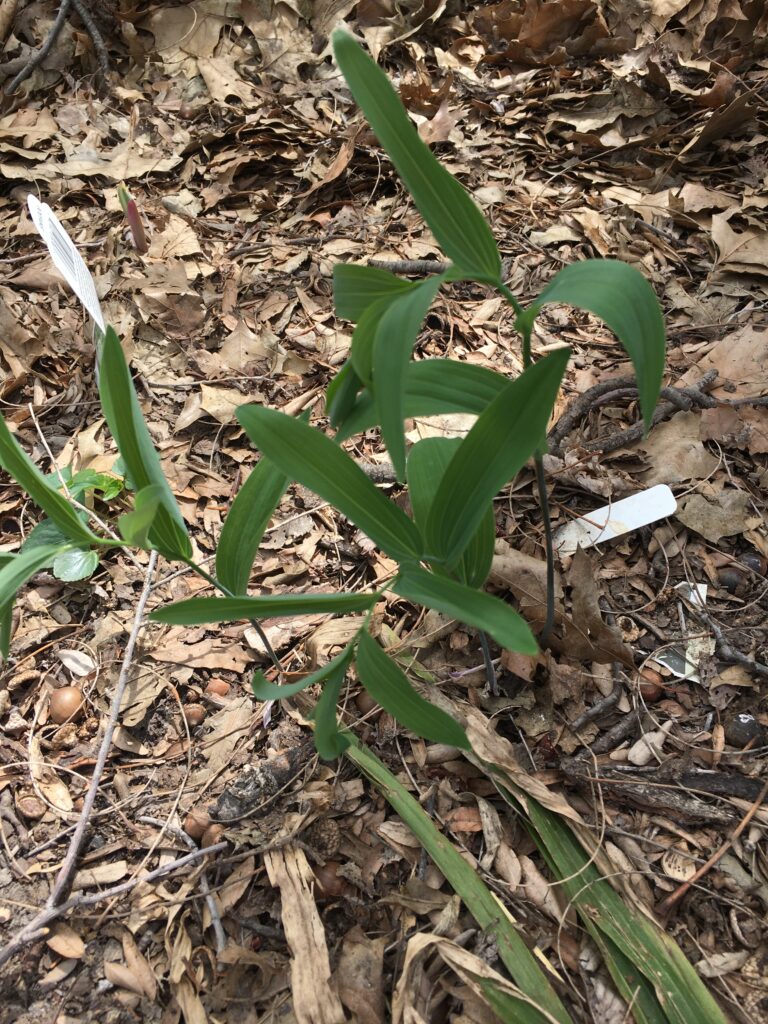
A few additions
Bolstered by my success, here are a few plants I plan to add to this new shade garden.
- Geranium maculatum ‘Crane Dance’
- Celandine Poppy
- Crested Iris
- Jack in the pulpit
- Bluestem Goldenrod
- Early Meadow Rue
I have been reluctant to start converting my dark and barren patch of ground into a shade garden. It has been really rewarding to see this garden come to life this spring. It took a little forethought and tenacity to make this garden take shape. It is not perfect, but I have a better handle on how to enhance it and help it through our Kansas summers.
